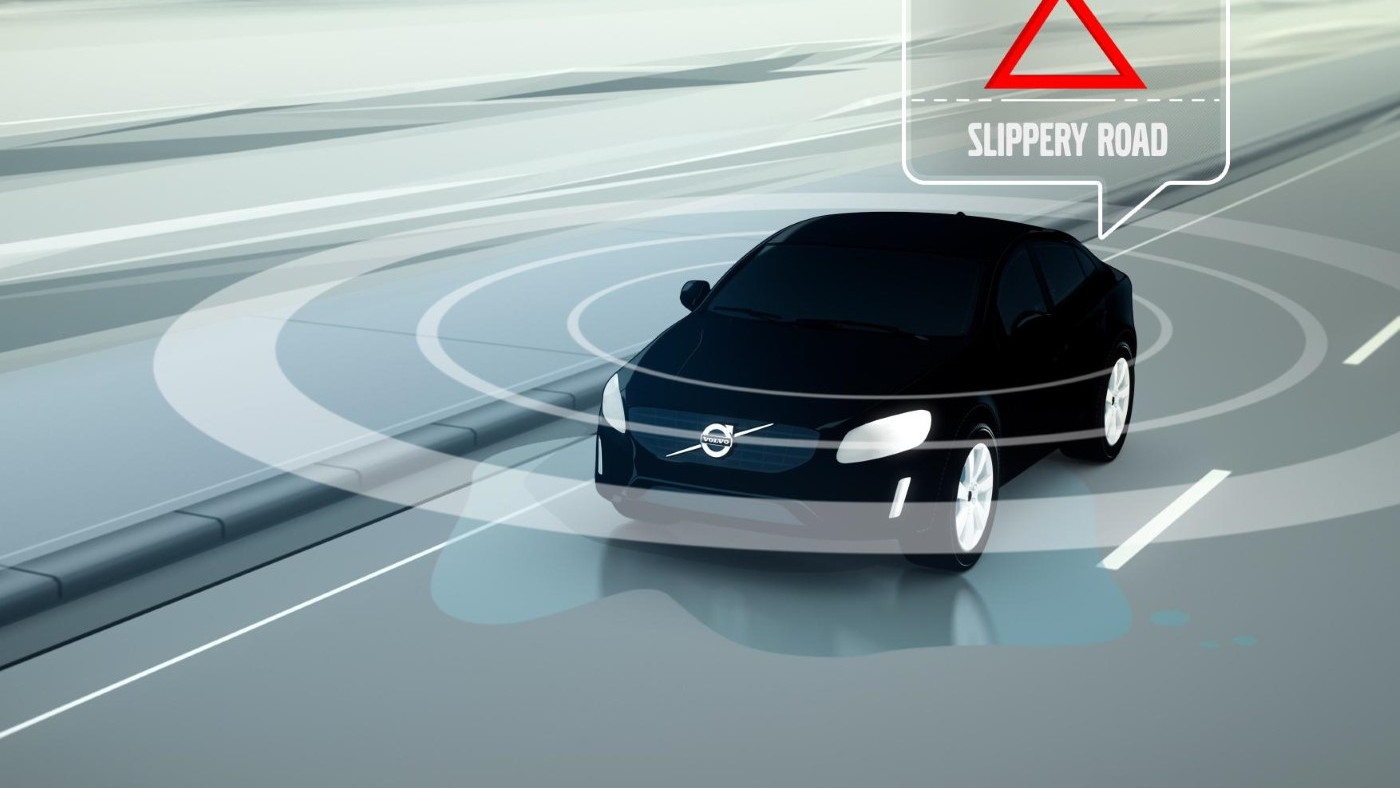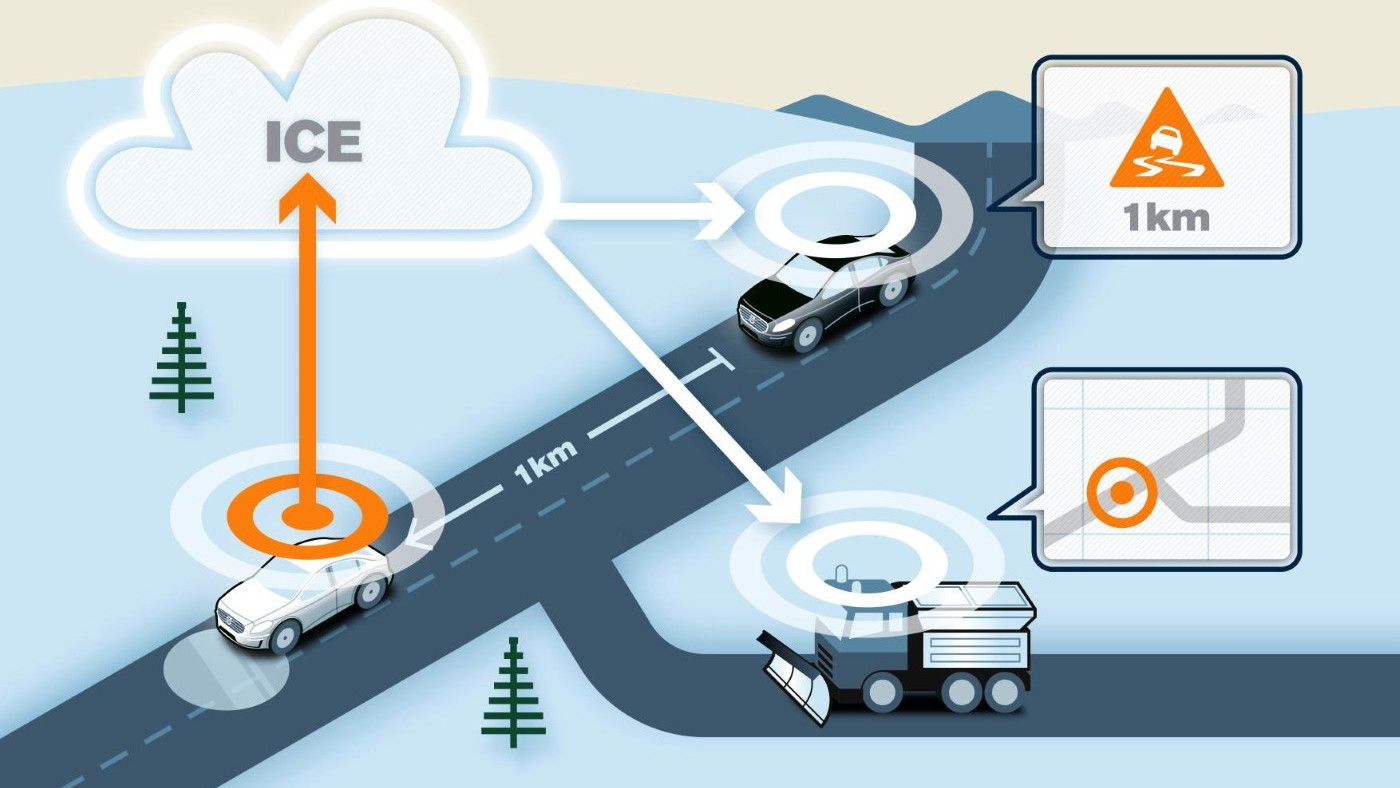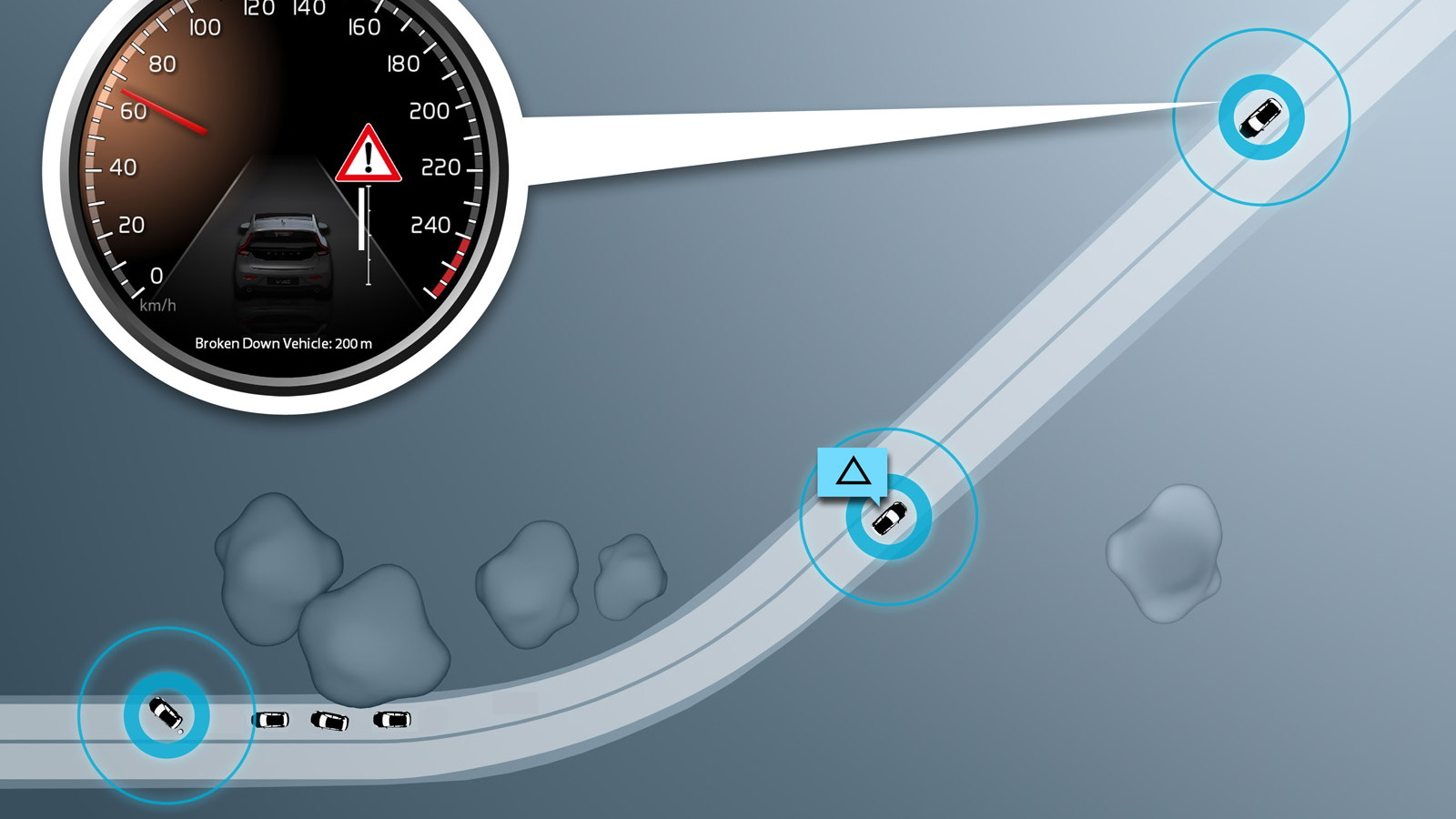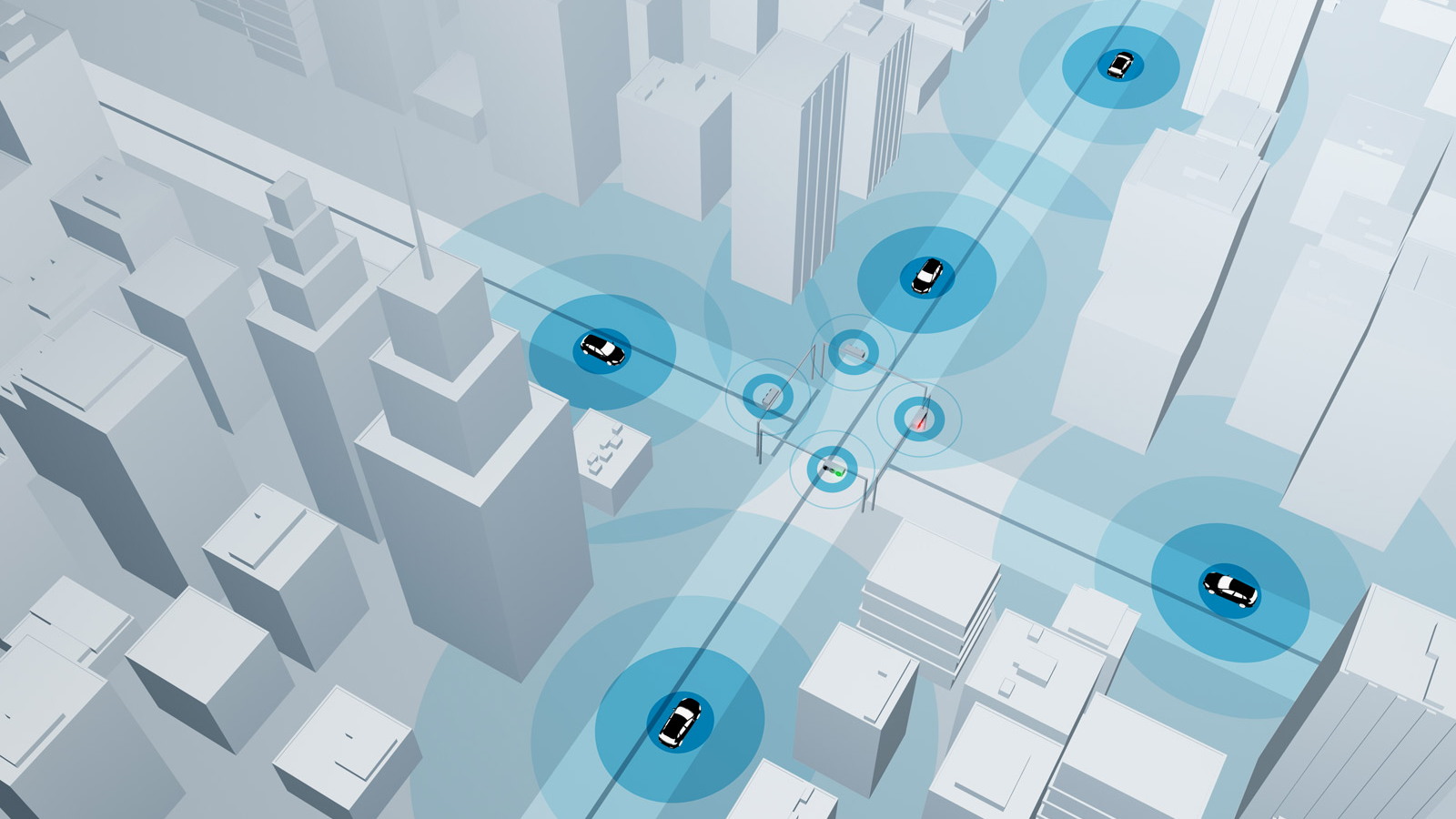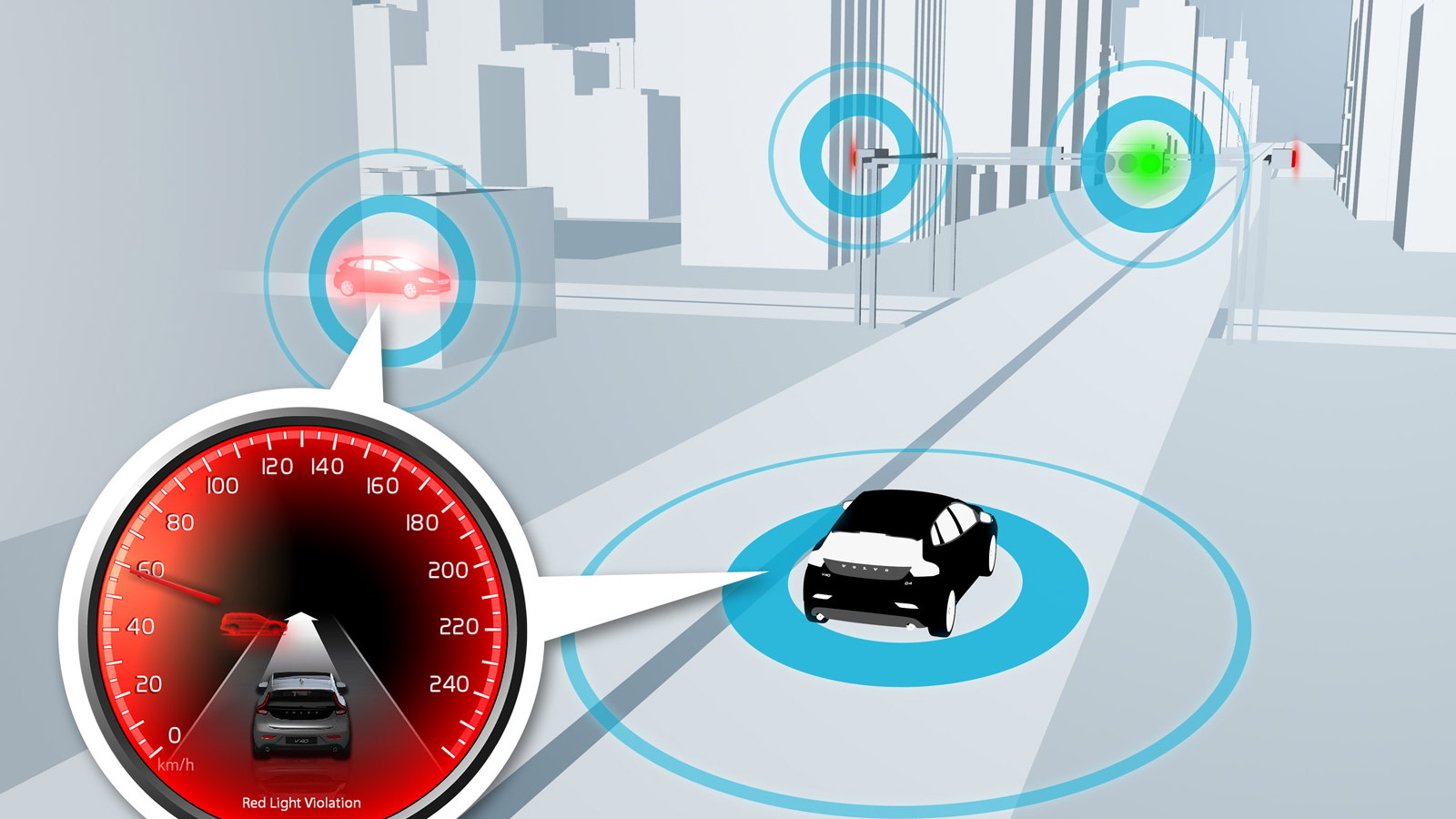MUST SEE: Cyclist Hit By Truck Lands Safely On...A Mattress? Security Video Explains It All
Slippery surfaces can claim drivers on the road too, and we never quite know whether there's gravel, ice or wet leaves around the next corner. Volvo is developing a system that will tell us though, using the latest car-to-car technology. In a pilot program with the Swedish Transport Administration (Trafikverket) and the Norwegian Public Roads Administration (Statens Vegvesen), Volvo will trial vehicle communication technology using real-time data to warn nearby vehicles of slippery patches on the road.
When the car detects a patch of low friction on the road--presumably through the car's traction and stability control systems--data is transmitted to Volvo Cars' database via the mobile network. A warning is instantly sent to other vehicles approaching the scene, warning them of slippery conditions up ahead. The warning can be adapted to the severity level--for example, if a driver is approaching a slippery surface too quickly.
Not only can the data help nearby drivers, but it's also sent to road administrators, who can determine whether any course of action is necessary--helping maintain the road, or reducing the chance of accidents on a particularly icy corner. "The data can be used to make winter road maintenance more efficient," explains Erik Israelsson, project leader for Volvo's Intelligent Transport System. "The information could help to improve road safety further for all road users."
ALSO SEE: Mazda MX-5 Driver Takes Porsches, BMWs, Hondas To Task: 15 Passes On First Lap
Transmitting road surface data is just one aspect of Volvo's ongoing car-to-car research project, which covers everything from systems that suggest the ideal speed to hit green traffic lights ahead, to warnings of broken-down vehicles or stopped traffic around the next blind turn. Volvo is even exploring systems that alert you when a vehicle may be running a red light, allowing a driver to take action before a collision occurs. Combined with autonomous vehicle technology, road trains and latest-generation infotainment system, Volvo's future cars could be some of the safest and most advanced on the roads.
_______________________________________
